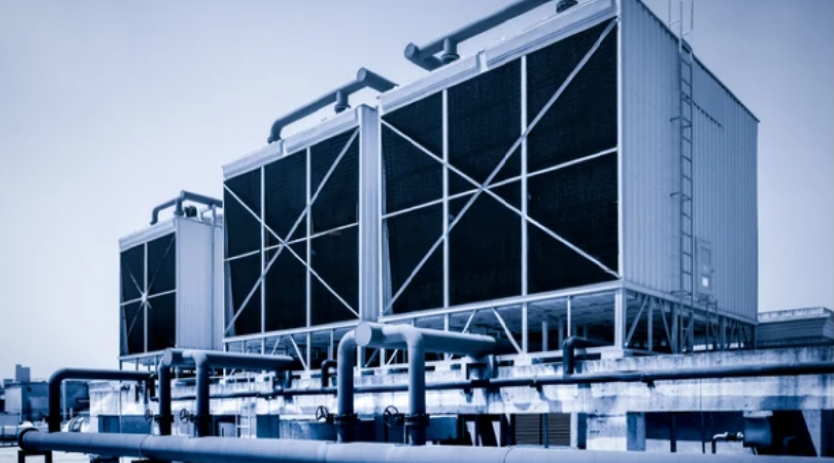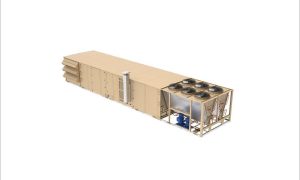The chilled water could be directly delivered to the buildings in DCS and then used to lower the temperature of the air passing through the building’s air conditioning system.
Chillers are commonly used central-type air conditioning systems that remove the heat from the water to a refrigerant in a closed-loop system. The chilled water is then circulated throughout the building to cool its inside temperature. The refrigerant is pumped to where the waste heat is transferred to the atmosphere. This technological approach requires each building to have its own “cooling system”, composed of the chiller, cooling tower, operational and maintenance teams, etc.
The conventional chiller system is subject to a continuous operation environment subject to extreme heat, saline humidity, and wind-borne sand. Over time, performance, energy/cooling efficiency and reliability suffer, leading to significant maintenance costs and, ultimately, equipment replacement. But the chilled water could be directly delivered to these buildings and then used to lower the temperature of the air passing through the building’s air conditioning system.
This is what a District Cooling System (DCS) does: chilled water is produced in a centralised manner and distributed to many buildings – in a district. In this manner, the output of one cooling plant is enough to meet the cooling demand of many buildings in a more energy-efficient way, with reduced charges of refrigerant fluids, and in some cases, by using not-in-kind technologies, phasing out the use of halogenated refrigerants. District cooling systems can reach up to 90 percent of energy efficiency if compared to conventional chillers. Along with electricity and water, district cooling constitutes a new energy service.
UNDP has been actively supporting countries to phase out ozone-depleting substances under the Montreal Protocol on Substances that deplete the Ozone Layer and deliver energy-efficient smart solutions. In this regard, such solutions, combined with multiple funding sources, overlap the use of hydrofluorocarbons (HFCs) and increase the efficiency of cooling systems. This can help parties meet future commitments under the Kigali Amendment and deliver important contributions towards reducing indirect greenhouse gas (GHGs) emissions.
Cookie Consent
We use cookies to personalize your experience. By continuing to visit this website you agree to our Terms & Conditions, Privacy Policy and Cookie Policy.













